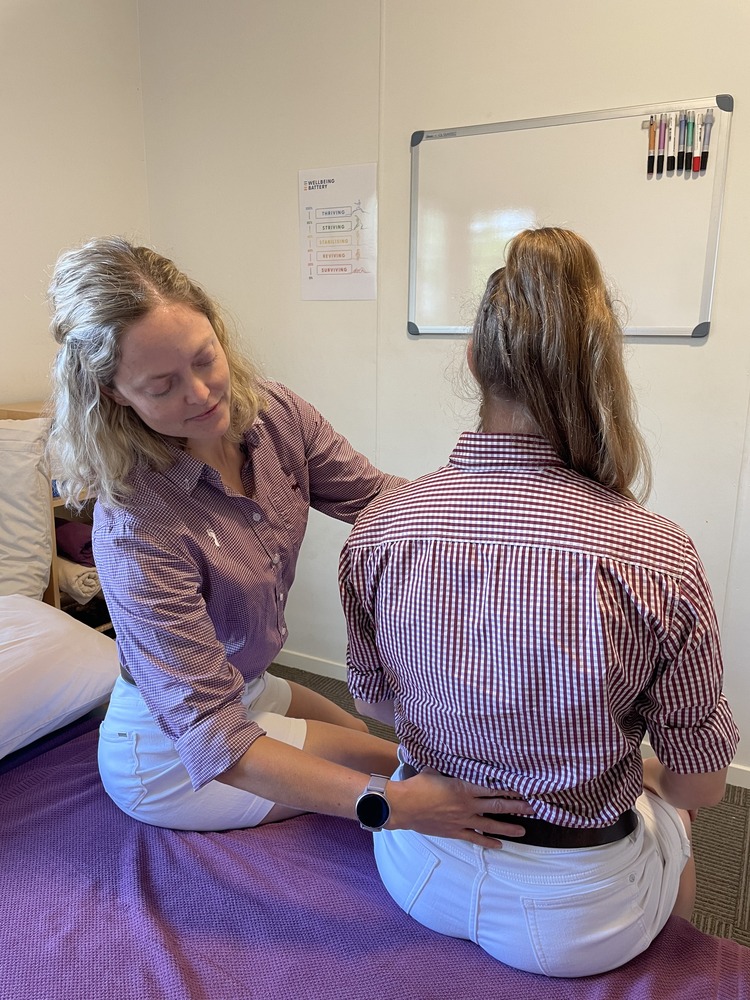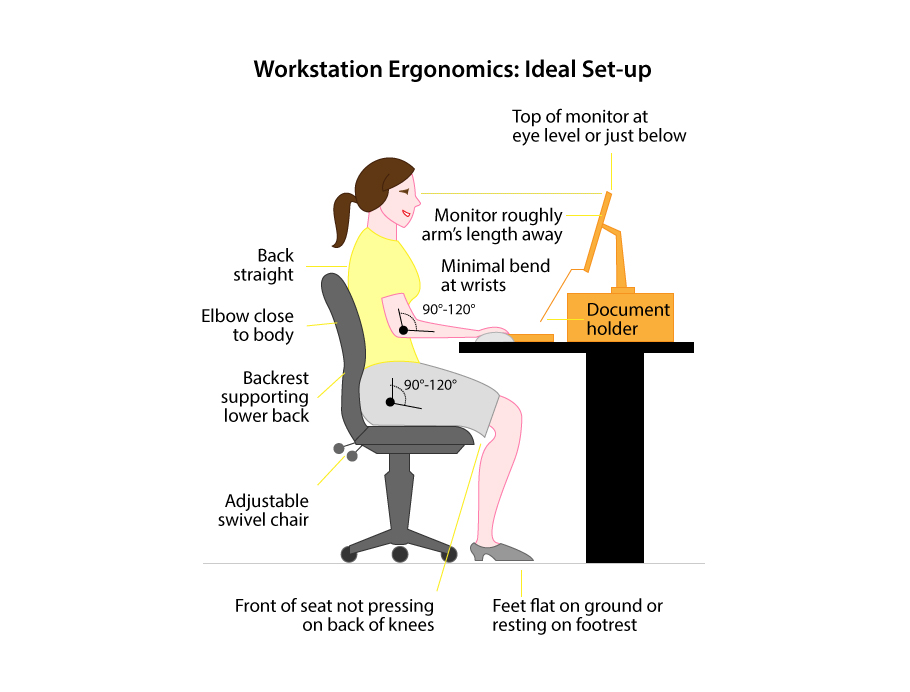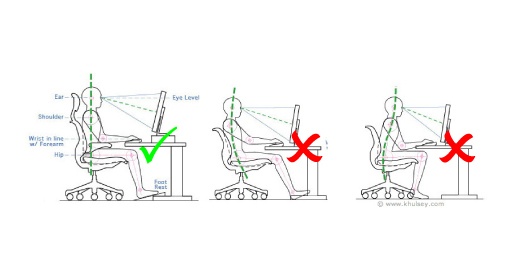Work Station Set Up
Our bodies don’t like being in any one position for too long. We’ve all stood for too long at a concert, or been in that 3 ½ hour long movie that has us feeling stiff or fatigued afterwards. When we are at work, it is no different, it’s just that our brain is occupied thinking about other things, and doesn’t give us the signal that our joints, muscles and nerves need to move.
Being in one position for long periods can cause some muscle groups to shorten and others to lengthen over time. This can be the reason that muscles eventually become tight or weak, joints can become stiff and then nerves aren’t able to glide through the body as they normally do. This will start to accumulate strain in your body.
You can prevent strain building up in your body by taking a few key actions during and after your work day.
How to prevent building up strain in your body at work:
- Take regular breaks from your working position.
A lot of our clients tell us that they get up often to go to the photocopier, get a glass of water or talk to someone. This may be the case and the question is more about consistency. Are you moving that often every hour, or only some of the day? Ideally, changing your position every 20mins is recommended. A change in position doesn’t have to mean standing up and walking around each time, it may just be doing a gentle spine twist in your chair, turning your neck from side to side, rolling your shoulders or tilting your pelvis back and forth a few times.
- Choose a reminder system to correct your posture.

Our clients are always telling us how they remind themselves to correct their posture. Here are a few ideas that might help you:
- Every time you hear the phone ring
- Before you open an email
- When you walk through a doorway
- Setting the background picture as a reminder on your computer or smart phone
- Using an app that pops up on the screen of your computer or phone
How to prevent strain building up in your body outside of work:
- Do regular exercise.
The more that your body can handle long walks, lifting weights, practising Yoga or gardening, the easier staying in one position at work will seem. Being strong and flexible will not only help you hold a better position at work, it will also help to slow the build-up of strain in your body and prevent injury. Not to mention the added work-life balance benefits!
- Get a thorough assessment from your Physiotherapist.
At Barefoot Physiotherapy, we can assess your nerves, joints, muscles and movements to measure the amount of strain you have built up in your body. You do not need to have any symptoms or conditions to have this assessment; think about it like going to the dentist for a check up to prevent something happening! If there is any strain building up in your body, we can help teach you how to reduce the strain and prevent it coming back again.
Basic Principles
- Keep work as close as possible to your body (papers, keyboard etc)
- Keep items that are used regularly between hip and shoulder height
- Only short periods of time should be spent doing repetitive tasks and holding static postures (aim for having a break every 20-30mins)
- Keep heavy reference materials in arm’s reach or so that you need to stand to access them
- Maintain upright posture and avoid twisting/slouching

Posture
- Maintain a neutral spine. This means maintaining your 4 natural curves. This position minimises stress on your spine and helps prevent injury. This applies to sitting, standing and lifting postures.
- Ensure your lower back is supported by the chair or a cushion/towel. Your back muscles should be soft
- Keep your head upright and in line with your shoulders.
- Shoulders should be relaxed back and down – the muscles on top of your shoulders should be soft
- Don’t hold the phone between your ear and shoulder – a headset would be ideal

Chair
Adjust the height of your chair to match the following:
- Elbows should be at desk height or slightly above
- Thighs are parallel to the floor & feet flat on the floor – you may need a footrest to achieve this
- Have a 2-3 finger width between back of knee and front of seat
- If you have a very deep seat you may need a cushion behind your back to allow for optimal posture & back support
- Adjust the height of backrest so it fits into curve of lower back
- Tilt backrest backwards slightly to minimise strain through the low back
Desk
- Desk surface should be just below elbow height
- Footrest should not interfere with movement of the chair
- There should be a gap between your desk and your thigh
- Items under the desk shouldn’t interfere with your feet
- Place frequently used items in top drawer
- Place phone so you can reach the handset and buttons without needing to move your trunk
Monitor
- Directly in front
- Top of screen level with or slightly lower than eyes when sitting upright
- Arm’s length away
Keyboard
- Flat on desk
- 5-10cm from front edge of desk
- Don’t rest wrists on desk or keyboard while keying

Mouse
-
Directly beside keyboard
-
Alternate sides
-
Avoid holding mouse while not using it (avoid holding a prolonged position)
-
Avoid controlling the mouse with only side-to-side wrist movement – keep your wrist in line with your forearm & move the forearm & wrist as one
Document Holders
- Place document holder next to the monitor and at the same height and distance as the monitor
- Use an angled surface to decrease prolonged periods of neck bending e.g. when reading for prolonged periods of time
Laptop Computers
If using a laptop for extended periods of time, consider:
- Docking station to ensure correct screen height and distance (as above)
- Use of external mouse and keyboard to avoid excessive reaching




